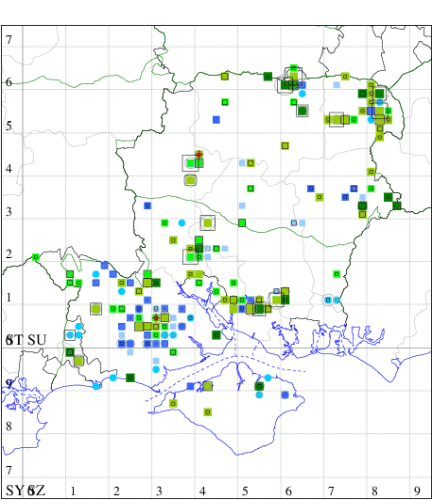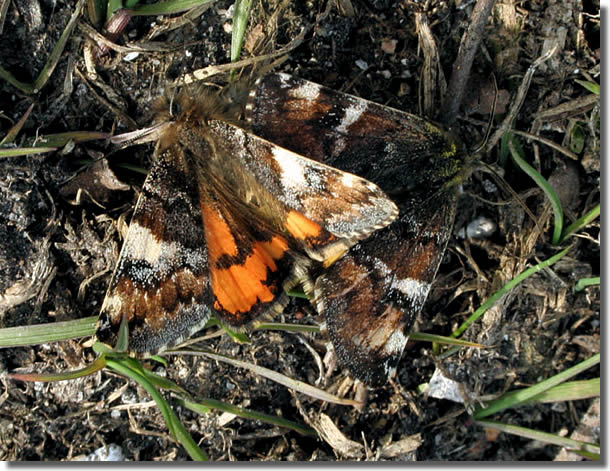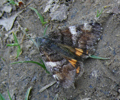Orange Underwing
Archiearis parthenias
Checklist Number70.203 [B&F: 1661]
Verification
Record will normally be accepted but photo evidence may be required - check with CMR if not sure of identity
Classification
| Family: | Geometridae |
| Subfamily: | Archiearinae |
| Genus: | Archiearis |
| Species: | parthenias |
| Authority: | (Linnaeus, 1761) |
Local in open woodland, scrubby heathland, embankments, and other rough open ground throughout much of the British Isles. In Hampshire and on the Isle of Wight has declined or disappeared altogether in many areas due to destruction of its birch woodland habitat and most often seen now in the New Forest and the north-east. Wingspan 35-39 mm. A diurnal flyer, seen in warm spring sunshine, often high amongst the branches but occasionally seen well on the ground - it seems to have an attraction to horse dung. They should be netted for examination: those netted are invariably males. Very similar to Light Orange Underwing B. notha, males can be distinguished by their antennae which are finely serrated in Orange Underwing, and are slightly feathered in Light Orange Underwing; on underside of hindwing of Orange Underwing, orange band projects centrally into dark outer band, often reaching outer margin, while in Light Orange Underwing, dark outer band is unbroken, and central projection of orange band is absent (MBGBI Vol 7 part 2). Larva feeds on Downy and Silver Birch, over-wintering as a pupa.


The abundance in each month is indicated as follows:
 No records
No records Very occasional
Very occasional Irregular
Irregular Uncommon
Uncommon Off-peak, but not unusual
Off-peak, but not unusual Off-peak, but not unusual
Off-peak, but not unusual Main flight time
Main flight time| J | F | M | A | M | J | J | A | S | O | N | D | |
|---|---|---|---|---|---|---|---|---|---|---|---|---|
| Adult |  |  |  |  |  |  |  |  |  |  |  |  |
| Larval |  |  |  |  |  |  |  |  |  |  |  |  |




